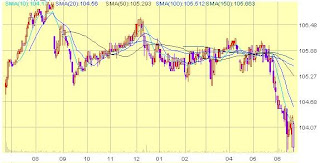New Retail 'iBond 2013' (Stock Code: 4218.hk) Investment Analysis
This new retail 'iBond 2013' is the third consecutive public listing of similar inflation-linked iBond by HKSAR government. Its maximum issue size is also HKD$10 billion with life span of 3 years, just identical to the first two batches of Hong Kong inflation-linked government bond. Coupon interest payable to all i-Bond holders will be paid semiannually on June 24 and December 24 each year, according to MAV (Moving Average Value) of C-CPI (Composite Consumer Price Index) which shall reflect Hong Kong inflation situation for the most current 6 months (half-year), by definition, until bond maturity date (June 24, 2016).
For this retail 'iBond 2013' public listing, issuer representative is HKMA (Hong Kong Monetary Authority), while joint lead managers are Bank of China Hong Kong Branch (BOCHK Stock Code: 2388.hk) as well as Hong Kong and Shanghai Banking Corporation (HSBC Stock Codes: HBC in New York, HSBA in London, 005.hk in Hong Kong). According to i-Bond prospectus, H.K. inflation-linked i-Bond is essentially tax-free (also with stamp-duty fee exempted), and the issuer will not re-invest related interest payments back to the assets of inflation-linked 'iBond 2013'. Initial subscription is only available to Hong Kong residents with valid H.K. Identity Cards (HKIDs). Principal investment amount must be at least HKD$10K (i.e. 100 bond units equivalent) or its integral multiples. It means only Hong Kong residents can purchase retail i-Bond at its face value (i.e.: HKD$100 per bond unit). Once over-subscribed, allocation will subsequently be made by ballot (similar to a lucky draw). After initial subscription (IPO period), overseas investors can then trade this new 'iBond 2013' (Stock Code: 4218.hk) in secondary market once successfully listed on Hong Kong Stock Exchange (HKEx Stock Code: 388.hk) beyond June 25. Source: Retail Bond IPO Prospectus issued by Hong Kong Special Administration Region (HKSAR) Government - People's Republic of China (PRC).
Same as the previous issues, yield of this new retail 'iBond 2013' can probably outperform H.K. actual inflation rate if deflation occurs, because iBond issuer (Hong Kong government) provides a guaranteed minimum annual interest rate at +1% (as a fixed coupon payment rate). Therefore, it is not always inflation-linked and we can simply call it a "deflation protection bond". Investors are advised to use it for hedging against possible risks of deflation or severe inflation. Source:: Second Batch of iBond (Stock Code: 4214.hk).
So is this new retail 'iBond 2013' worth investing? For particular investment risks associated with H.K. inflation-linked iBond, you may refer to our published executive summary for the First Batch of iBond (Stock Code: 4208.hk) which list out the 4 key risk factors for retail iBond as well as our forecasted market price (according to our detailed mathematical calculations and bond yield formula). This executive summary also compares the major differences between Hong Kong inflation-linked iBond and the U.S. I-Bonds, U.S. TIPS (Treasury Inflation-Protected Securities) or the similar ISB (Inflation-linked Savings Bonds).
Investors can also foresee the future market price trend of this latest retail i-Bond (Stock Code: 4218.hk) easily from historical market price performance of the second i-Bond batch (Stock Code: 4214.hk):
Based on above historical stock price chart of the second iBond batch (Stock Code: 4214.hk), iBond stock price could close at HKD$106 by end-2012 (i.e.: 6% increase in market price value from initial face value), while its first coupon interest rate could reach 3.5% p.a. You may also notice that its historical market data price value has never dropped below the iBond face value (i.e.: HKD$100 per bond unit). Main reason behind is that BCR (bond coupon rate) of inflation-linked iBond should always be higher than its YTM (yield to maturity). However, as what we already stated in our previous investment analysis report, only Hong Kong residents can purchase retail i-Bond at its face value (also named as nominal value or par value) on primary market, while foreign investors must buy it at actual market price value (premium value) on secondary market after public listing. This arrangement should thus be considered as a social welfare or even a free gift to Hong Kong residents.
Final Conclusion of this Retail Government Bond Analysis:
We, Mr China, do strongly recommend a buy for this third 'iBond 2013' (Stock Code: 4218.hk) on primary market (initial subscription) if you are luckily a HK resident. Main reason is that the yield of this new HK retail government i-Bond should be much higher than YTM (yield to maturity) of similar product HK-EFN (Hong Kong Exchange Fund Notes) with the same life span of 3 years, just like the first and second batches of HK inflation-linked iBond.
More Bond Analysis Investment Reports:
Table of Summary: Entire List For Our Bond (or Stock) Investment Analysis

1 Comments:
This is very good stock investment analysis. very helpful and useful tips. thank you for sharing this information.
http://www.avafx.com
Post a Comment